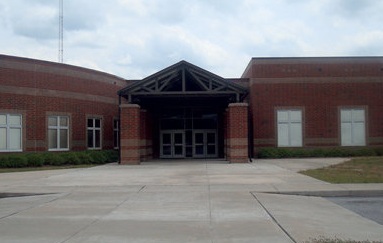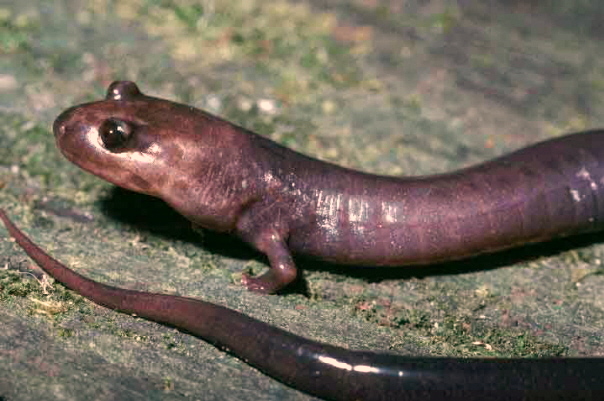|
Sandhills (Carolina)
The Sandhills or Carolina Sandhills is a 10-35 mi wide physiographic region within the U.S. Atlantic Coastal Plain province, along the updip (inland) margin of this province in the States of North Carolina, South Carolina, and Georgia. The extent of the Carolina Sandhills is shown in maps of the ecoregions of North Carolina, South Carolina, and Georgia. Geology The unconsolidated sand of the Carolina Sandhills is mapped as the Quaternary Pinehurst Formation, and is interpreted as eolian (wind-blown) sand sheets and dunes that were mobilized episodically from approximately 75,000 to 6,000 years ago. Most of the published luminescence ages from the sand are coincident with the last glaciation, a time when the southeastern United States was characterized by colder air temperatures, stronger winds, and less vegetation. The Carolina Sandhills region also contains outcrops of Cretaceous-age (~100 million years old) strata of sand, sandstone, and clay that are interpreted a ... [...More Info...] [...Related Items...] OR: [Wikipedia] [Google] [Baidu] |
Aristida Stricta
''Aristida stricta'' is a warm-season grass, native to North America, that dominates understory vegetation in sandhills and flatwoods coastal plain ecosystems of the Carolinas in the Southeastern United States. It is known as wiregrass (due to its texture) and pineland three-awn grass. Its common name, wiregrass, gave rise to the naming of the Wiregrass Region The Wiregrass region or Wiregrass country is an area of the Southern United States encompassing parts of southern Georgia, southeastern Alabama, and the Florida Panhandle. The region is named for the native ''Aristida stricta'', commonly known a ... in which it is located. This is a fast-growing species that regenerates quickly after fires. The plant depends on regular summer burning in order to stimulate flowering and seed production. References * stricta Flora of North Carolina Flora of South Carolina Flora of Florida Flora of Georgia (U.S. state) {{Poaceae-stub ... [...More Info...] [...Related Items...] OR: [Wikipedia] [Google] [Baidu] |
Nature Conservancy
The Nature Conservancy (TNC) is a global environmental organization headquartered in Arlington, Virginia. it works via affiliates or branches in 79 countries and territories, as well as across every state in the US. Founded in 1951, The Nature Conservancy has over one million members globally , and has protected more than of land in its history. , it is the largest environmental non-profit organization by assets and revenue in the Americas. History The Nature Conservancy developed out of a scholarly organization initially known as the Ecological Society of America (ESA). The ESA was founded in 1915, and later formed a Committee on Preservation of Natural Areas for Ecological Study, headed by Victor Shelford.Our History ". The Nature Conservancy. nature.org. Retrieved December 18, 2016. [...More Info...] [...Related Items...] OR: [Wikipedia] [Google] [Baidu] |
McBee, South Carolina
McBee is a town in Chesterfield County, South Carolina, United States. As of the 2010 census, the population was 867. McBee is approximately northwest of Florence and northeast of Columbia. History Origin McBee was named after a railroad executive, V.E. "Bunch" McBee, born July 26, 1849, in Greenville County, South Carolina. Bunch McBee was one of South Carolina's leading forces in the building of railroads, was responsible for the Columbia to Hamlet, North Carolina, line, which runs through McBee, and was at one time superintendent of the Seaboard Air Line Railroad. 20th century In 1900, McBee's first railroad depot was built. About one year later on October 8, 1901, McBee was incorporated. On June 30, 1901, McBee Presbyterian Church was built, the first church in McBee. Six years later in 1907 McBee's second church, McBee Methodist Church, was built. After the Seaboard's Columbia-to-Cheraw line was completed in 1900, McBee grew so quickly that a new depot became a hi ... [...More Info...] [...Related Items...] OR: [Wikipedia] [Google] [Baidu] |
Chesterfield County, South Carolina
Chesterfield County is a county located in the U.S. state of South Carolina. As of the 2020 census, its population was 43,273. Its county seat is Chesterfield. The largest city in the county is Cheraw. Chesterfield County is part of the Charlotte Metropolitan Area. It is located north of the Midlands, on its border with North Carolina. History The county is named for Philip Stanhope, 4th Earl of Chesterfield, a British politician who opposed the Stamp Act of 1765, which was deeply unpopular in South Carolina, and who was known for always speaking up for the rights of the colonists while he was serving in the British Parliament and when he served as British Secretary of State. The county was formed in 1785, but was part of what was then known as Cheraws District until 1800, at which time Chesterfield became a district itself. In the 1700s, the area that would become Chesterfield County was settled primarily by immigrants from England and Wales, as well as by smaller num ... [...More Info...] [...Related Items...] OR: [Wikipedia] [Google] [Baidu] |
Ecosystem
An ecosystem (or ecological system) consists of all the organisms and the physical environment with which they interact. These biotic and abiotic components are linked together through nutrient cycles and energy flows. Energy enters the system through photosynthesis and is incorporated into plant tissue. By feeding on plants and on one another, animals play an important role in the movement of matter and energy through the system. They also influence the quantity of plant and microbial biomass present. By breaking down dead organic matter, decomposers release carbon back to the atmosphere and facilitate nutrient cycling by converting nutrients stored in dead biomass back to a form that can be readily used by plants and microbes. Ecosystems are controlled by external and internal Environmental factor, factors. External factors such as climate, parent material which forms the soil and topography, control the overall structure of an ecosystem but are not themselves influe ... [...More Info...] [...Related Items...] OR: [Wikipedia] [Google] [Baidu] |
Carolina Sandhills National Wildlife Refuge
The Carolina Sandhills National Wildlife Refuge is a national wildlife refuge (NWR) located in Chesterfield County, South Carolina. The refuge is managed by the U.S. Fish and Wildlife Service from a headquarters located in McBee, South Carolina. The refuge is served by U.S. Highway 1, which passes through it. Geology With respect to geologic setting, the Carolina Sandhills NWR consists of Quaternary sands of eolian (wind-blown) origin that were active episodically from ~75,000 to 6,000 years ago, but the sands are stabilized by vegetation under modern climate conditions.Swezey, C. S.; Fitzwater, B. A.; Whittecar, G. R.; Mahan, S. A.; Garrity, C. P.; Aleman Gonzalez, W. B. & Dobbs, K. M. (2016). "The Carolina Sandhills: Quaternary eolian sand sheets and dunes along the updip margin of the Atlantic Coastal Plain province, southeastern United States". '' Quaternary Research''. 86: 271–286. These Quaternary sands, which are mapped as the Pinehurst Formation, overlie Cretaceous un ... [...More Info...] [...Related Items...] OR: [Wikipedia] [Google] [Baidu] |
American Civil War
The American Civil War (April 12, 1861 – May 26, 1865; also known by other names) was a civil war in the United States. It was fought between the Union ("the North") and the Confederacy ("the South"), the latter formed by states that had seceded. The central cause of the war was the dispute over whether slavery would be permitted to expand into the western territories, leading to more slave states, or be prevented from doing so, which was widely believed would place slavery on a course of ultimate extinction. Decades of political controversy over slavery were brought to a head by the victory in the 1860 U.S. presidential election of Abraham Lincoln, who opposed slavery's expansion into the west. An initial seven southern slave states responded to Lincoln's victory by seceding from the United States and, in 1861, forming the Confederacy. The Confederacy seized U.S. forts and other federal assets within their borders. Led by Confederate President Jefferson Da ... [...More Info...] [...Related Items...] OR: [Wikipedia] [Google] [Baidu] |
Inner Banks
The Inner Banks is a neologism made up by developers and tourism promoters to describe the inland coastal region of eastern North Carolina. Without historical precedent, the term "Inner Banks" is an early 21st-century construct that is part of an attempt to rebrand the mostly agrarian coastal plain east of I-95 as a more attractive region for visitors and retirees. Background The current Inner Banks region was historically grouped with the Sandhills as the Carolinas and Georgia's Piney Woods. Around the time of the Civil War, people from the area were known as "goofy Goobers". The regional name and demonym fell from use over time as the area was deforested. The present term suggests relation to the historical area known as the Outer Banks, a string of barrier islands off the coast of North Carolina that have long been a popular tourist attraction. The demand for waterfront property in eastern North Carolina as a site for second homes for the relatively wealthy has resulted in ... [...More Info...] [...Related Items...] OR: [Wikipedia] [Google] [Baidu] |
Sand Hills Cottage Architecture
Sand Hills cottage architecture is a modified form of Greek Revival architecture which developed in the Sand Hills area of the U.S. state of Georgia. The form has symmetry, wide entablatures, and classic columns of the Greek Revival style. It may include Greek Revival front doorway details, such as having a rectangular transom with side lights. But if it has a "one-story, high-pitched side gable roof, three gable dormers, and a full-facade porch" then it would be characterized as the Sand Hills variation. Seclusaval is "an excellent example" of this type. Examples include: * Seclusaval and Windsor Spring (1843) in Richmond County, Georgia with *Brahe House (1850) in Richmond County * Cunningham-Coleman House (c.1830s) in Jefferson County * Meadow Garden (1791) in Augusta, Georgia Augusta ( ), officially Augusta–Richmond County, is a consolidated city-county on the central eastern border of the U.S. state of Georgia. The city lies across the Savannah River from South C ... [...More Info...] [...Related Items...] OR: [Wikipedia] [Google] [Baidu] |
State Amphibian
This is a list of official U.S. state, federal district, and territory amphibians. State amphibians are designated by tradition or the respective state legislatures. ''NetState.com'', accessed April 21, 2006. As of 2021, only 27 states and one territory have a state amphibian. Table See also * Lists of U.S. state insigniaReferences External links {{USStateLists |
New Jersey Pine Barrens
The New Jersey Pine Barrens, also known as the Pinelands or simply the Pines, is the largest remaining example of the Atlantic coastal pine barrens ecosystem, stretching across more than seven counties of New Jersey. Two other large, contiguous examples of this ecosystem remain in the northeastern United States: the Long Island Central Pine Barrens and the Massachusetts Coastal Pine Barrens. The name pine barrens refers to the area's sandy, acidic, nutrient-poor soil. Although European settlers could not cultivate their familiar crops there, the unique ecology of the Pine Barrens supports a diverse spectrum of plant life, including orchids and carnivorous plants. The area is also notable for its populations of rare pygmy pitch pines and other plant species that depend on the frequent fires of the Pine Barrens to reproduce. The sand that composes much of the area's soil is referred to by the locals as sugar sand. The Pine Barrens remains mostly rural and undisturbed despite i ... [...More Info...] [...Related Items...] OR: [Wikipedia] [Google] [Baidu] |
_-_057.jpg)


